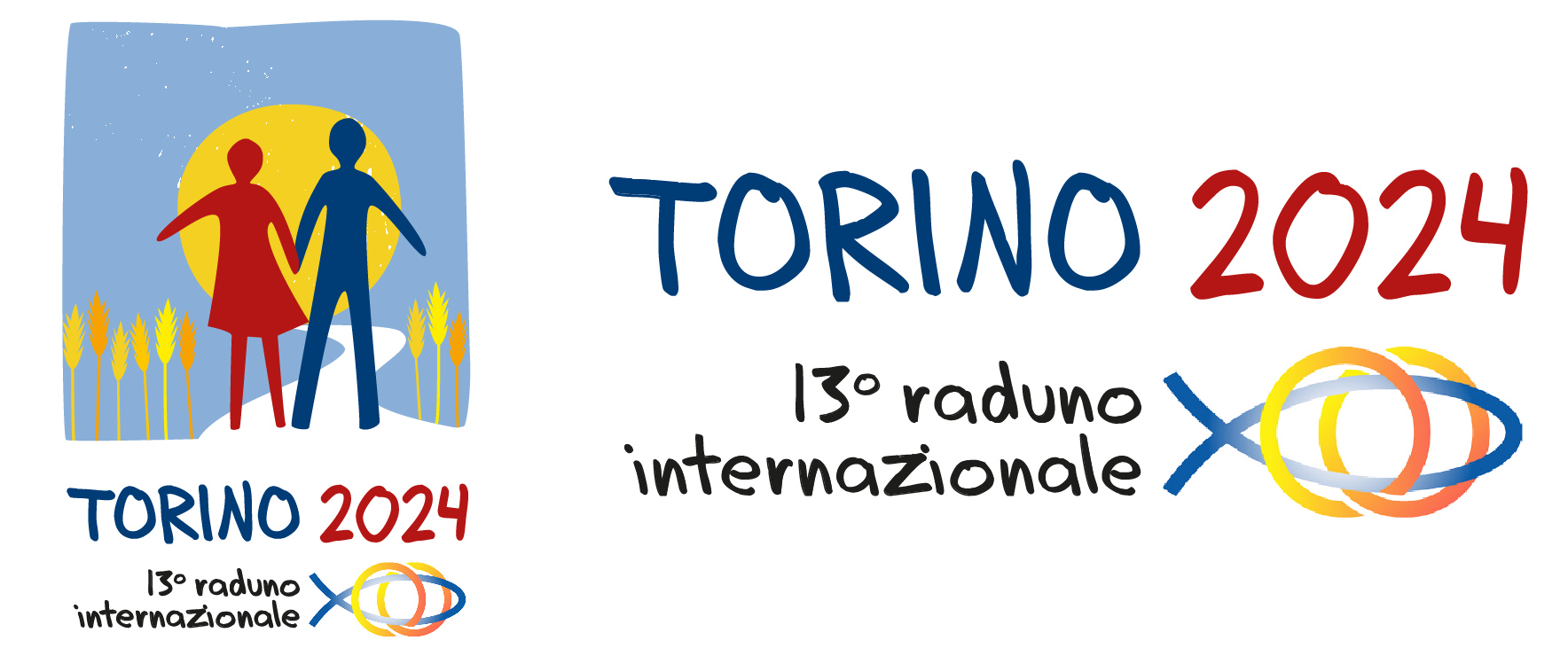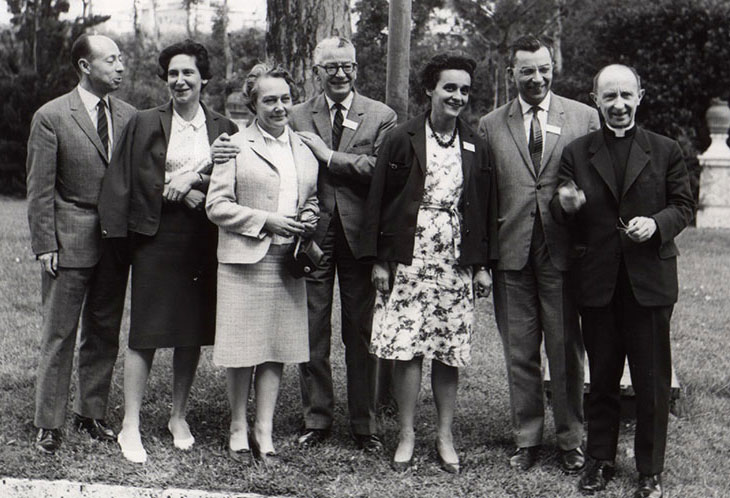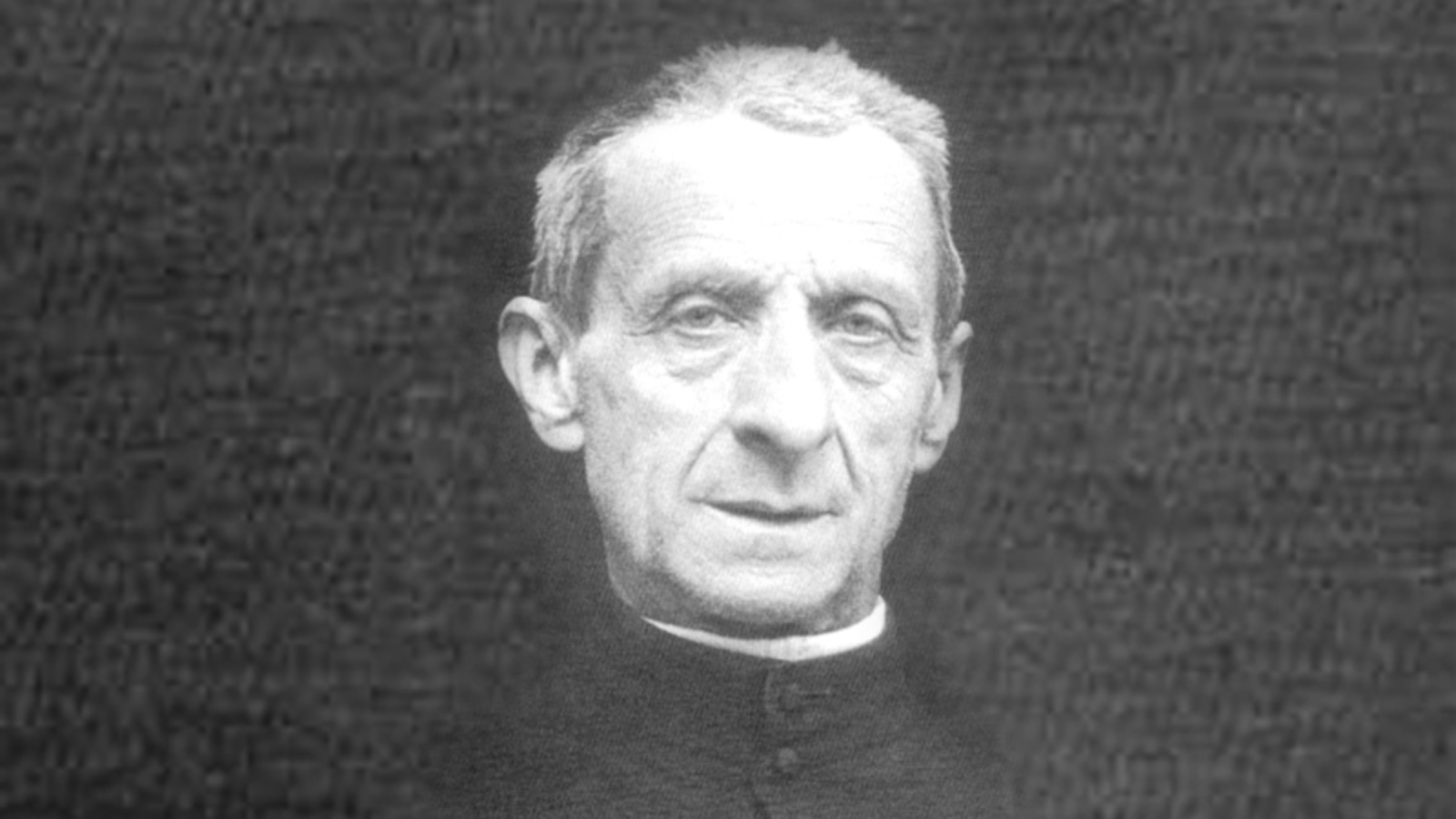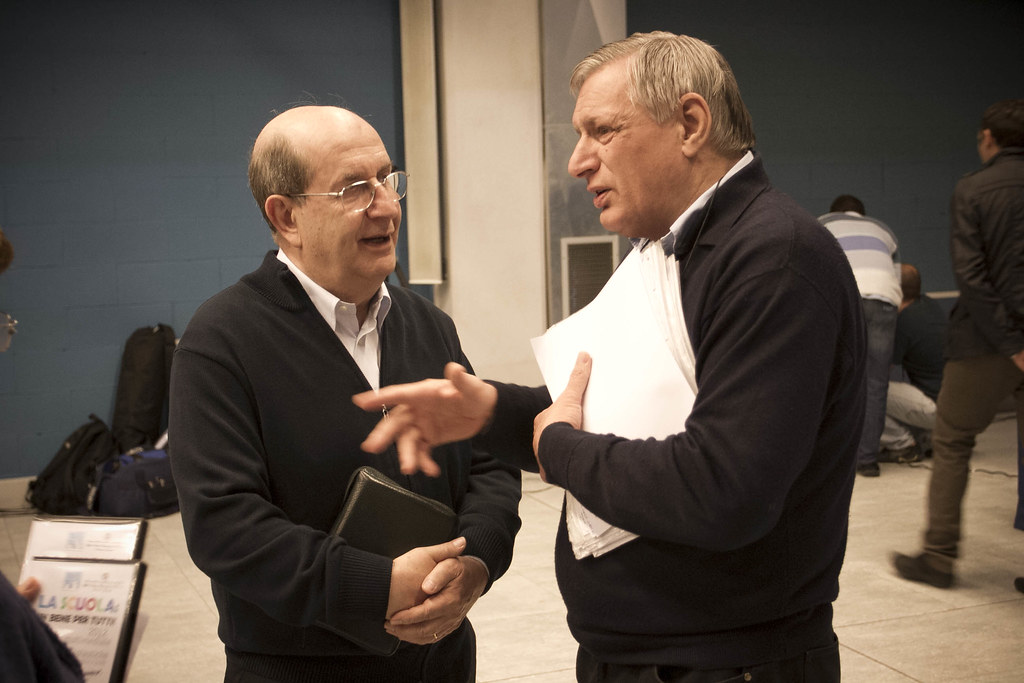The experience of the Emmaus disciples, narrated by the evangelist Luke (cf. Lk 24:13-35), constitutes a paradigmatic testimony to the Easter faith of the early Christian community. Indeed, from the very beginning, the Church lives the liturgical celebration as the burning experience (Lk 24:32) of the encounter with the Lord Jesus and, from this presence, it sees the joy of proclamation and the impetus of mission spring forth: “Truly the Lord is risen!” (Lk 24:34).
The Emmaus cycle, by the painter Arcabas, offers us an eloquent testimony to this. In the final scene, the artist seems to make us witness the impetuous wind that has shocked and transfigured the lives of the two disappointed disciples.
The overturned chair on the ground, the crumpled tablecloth, the remains of the supper, the now extinguished candles, every detail reveals us what took place there but, at the same time, the open door to the starry sky reveals us its mystery: the word of the Gospel opens wide unexpected horizons and is called to fill the whole world with joy!
In order for the wind of the Spirit to still inebriate the cenacles of our Sunday assemblies, we need to open wide the doors to the presence of the Lord Jesus (cf. Acts 2:1-13) and make our communities a hospitable and welcoming place.
The space of the rite, in fact, constitutes that interlude of suspended time that is not meant to trap us within an alienating experience, but on the contrary, it strives to lead us into a practice of life, having as its purpose to make us rediscover the flavor of everyday life, transfigured by the luminous experience of the Risen Lord (“they recognized him at the breaking of the bread” Lk 24:31).
Indeed, this is the Eucharistic wisdom, the involvement in the Easter event of a humanity called to make itself a sign of the Lord Jesus, a space and time to host the break-in of the unexpected guest, who came to sweep away the sadness of the heart, to open wide, within each one of us, horizons of starry sky.
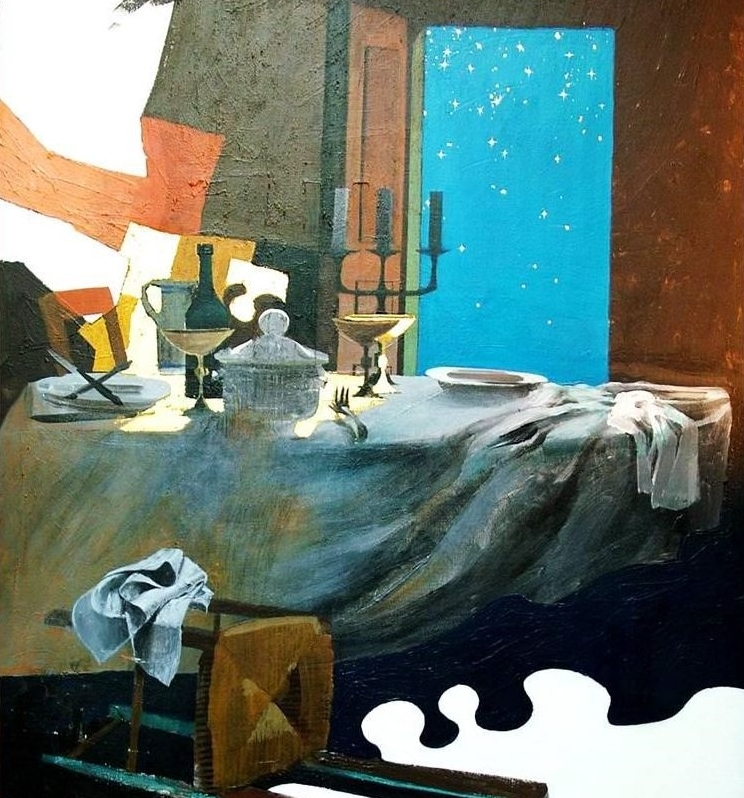
Arcabas, Emmaus
